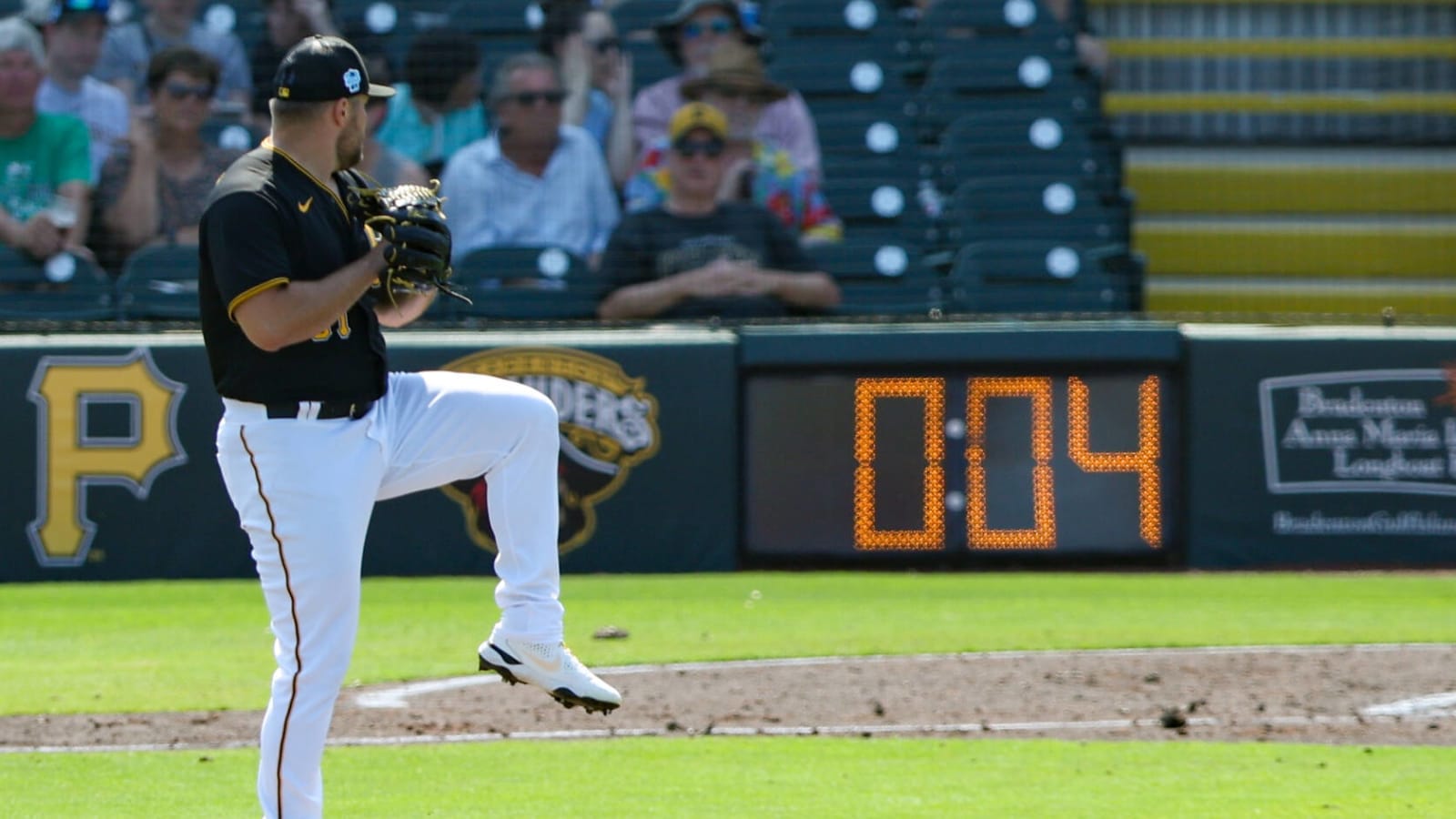
MLB's newest rule already looks promising
After only the first weekend of spring training games, MLB’s new pitch clock rule has proven to be a welcome addition to the sport.
The rule mandates that a pitcher must deliver the ball with the bases empty in 15 seconds or within 20 seconds with the bases occupied. A hitter must be in the box and facing the pitcher with no less than eight seconds remaining on the pitch clock.
When a pitcher violates the rule, a ball is called. When a batter does, a strike is called on him. A hitter gets one timeout per plate appearance. A pitcher can step off the rubber twice per plate appearance, thus resetting the pitch clock.
According to The Athletic’s Jayson Stark, 69 pitch clock violations occurred over 35 games during the first weekend of spring training games.
Time for another update from MLB on pitch-timer violations so far:
— Jayson Stark (@jaysonst) February 27, 2023
16 games Sunday
35 clock violations
27 by pitchers
8 by hitters
Total for the spring:
35 games Fri-Sun
69 clock violations
1.97 per game
Now slightly above the Week 1 rate in the minors last year (1.73/game)
On Saturday, the Red Sox-Braves game ended in a tie when Braves hitter Cal Conley struck out with the bases loaded because he didn't get set in time. Conley didn't protest, but the new rule confused him.
"The umpire said I was looking down," Conley said, according to the Atlanta Journal-Constitution's Justin Toscano. "I was looking down at the catcher as he was standing up. Not really sure if the pitcher was ready to go, catcher definitely wasn’t."
Expect the pitch clock to be adjusted over time. Some have called for more than 20 seconds for a pitcher to deliver a pitch with runners on base.
When a regular- or postseason game is decided by a pitch clock violation, expect an uproar. Umpires, however, must enforce the rule at key moments to give it teeth.
The sport can’t have one set of rules for the early innings or early in the season and others for late in games or late in the season. Enforcement must be uniform.
During the first weekend of spring training games, the effect was noticeable. Games were shortened by roughly 30 minutes, according to reports.
Through the first weekend of spring training, games averaged 2 hours and 37 minutes. Last year, spring training games took more than three hours -- a significant difference for a sport dealing with waning fan interest.
Shaving 30 minutes will lead to more action and, hopefully, more eyeballs. It could be the biggest shift in the style of the game since the designated hitter was added to the American League in 1973.
Some players are fans of the new rule. New York Mets ace Max Scherzer told ESPN he can disrupt the hitters’ timing with the pitch clock.
"Really, the power the pitcher has now -- I can totally dictate pace," Scherzer said. "The rule change of the hitter having only one timeout changes the complete dynamic of the hitter-and-pitcher dynamic. I love it."
Reigning American League MVP Aaron Judge also likes the rule, saying it can benefit hitters by tiring pitchers.
“I think you can play around with it a little bit," Judge said, according to the New York Post. "It definitely speeds up the game. Anything that keeps the pitcher moving and on the go and hopefully keep them out of breath, I’m looking forward to.”
With big names on board, others are sure to follow. Kudos to MLB. The pitch clock has a chance to become a huge win for the sport.
More must-reads:
- Small sample size reveals huge impact of MLB's new pitch clock
- Watch: Red Sox-Braves game ends in tie due to pitch clock violation
- The 'MLB home run leaders' quiz
Customize Your Newsletter
 +
+
Get the latest news and rumors, customized to your favorite sports and teams. Emailed daily. Always free!








